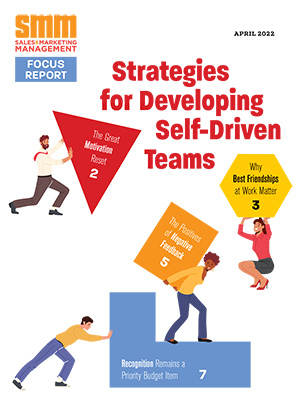Most people connect the idea of telemarketing to those folks who call you during your dinner to sell carpet cleaning. Thus, it isn’t surprising manufacturing firms tend to be biased against using telemarketing as a sales tool.
And yet, no small number of industrial manufacturers have found telemarketing (for purposes of clarity, we’ll call it sales prospecting by phone) can be used as a good tool to explore new markets or prospect for new customers, and even as a primary sales channel.
Let’s take a closer look at the potential uses and benefits:
1. Cost of sales. Industrial salespeople covering large territories (like Oregon and Washington) depend on inquiries from advertising, direct mail, trade shows, publicity, and other marketing communications efforts to find new customers. The problem with these big territories is that the cost of a sales call ranges from $100 to $200 per call.
Despite the costs and distances, many industrial salesmen still prefer personal calls rather than qualifying prospects on the phone. For many sales reps, the physical action of driving great distances, dropping in on known accounts, and making a lot of contacts creates the false impression they are covering the territory.
But the fact of the matter is, it costs too much today to make cold calls to unqualified prospects. Consequently, sales prospecting by phone becomes the most efficient strategy.
2. Helping your sales reps with qualified leads. Almost all industrial sales reps agree with lead and prospect qualification. They would welcome focusing their time on 50 qualified prospects with projects rather than 1,200 general inquiries.
Today’s industrial salesman is required by their factory or principals to do quotations, customer follow-up, training, service, and a wide range of administrative tasks. Most do not have the time or patience to spend hours on the phone qualifying hundreds of inquiries—and they don’t.
If you really want to get better sales performance out of your rep organization, generate a lot of inquiries and then qualify them as good leads.
3. Updating the customer database. You can prospect for projects with known customers simply by updating your customer database once a year. One capital equipment manufacturer we worked with needed to update their customer database to do direct marketing. The database had not been updated for 10 years, and contact names, phone and fax numbers, and other information were seriously out of date. Of the more than 800 contacts, we completed interviews with 568 customers.
We also tracked down the specific engineer in each company who bought this type of equipment and asked them if there were any future projects to buy material handling equipment. We found 134 future projects (14.5 percent) that would require quotations in the next two years. These projects range from $100,000 to $400,000 each) The total cost of the project was $4,100, which provided 134 qualified new projects at $30 per contact (project).
4. Finding new markets and new customers. Here is an example of a manufacturer that purchased a product line of pallet handling machines. These machines sold for $30,000 to $40,000 each, and they did not offer commissions or discounts that were attractive to independent reps or distributors. Consequently, these products had to be sold direct without an outside sales force.
Both markets and customers were only vaguely known, so the marketing effort was based on an inquiry generation program. The program began with shotgun marketing techniques using advertisements, product releases, and trade shows to generate inquiries from a variety of markets.
The secret to the success of this lead generation project was the follow-up and qualification of every inquiry. All inquiries were qualified by phone, and each inquirer was pursued with follow-up efforts of at least three calls. Over a period of one year, the results of the inquiry follow-up led to:
• Identification of 11 market segments from current quotations.
• Determination of the sales potential in each market in terms of prospects.
• Prioritization of markets.
Once this information was defined, the marketing program was then focused on the specific market segments, using sales prospecting, advertisements, product releases, and trade shows.
A prospect database was designed in Act Software that kept track of every prospect and the status of the prospect needs and potential projects. The prospect database could be easily connected to the quotation and order information. This made it possible to trace all leads to quotations and quotations to orders.
This information was then published in an annual summary report. The report allowed management to assess the costs and benefits of the lead generation program and to make annual changes in media used.
The lead generation and sales prospecting program made it possible for one inside salesperson to get this new product line off the ground and reach the sales forecast in the very first year of operation. It also allowed sales to identify the target markets and best customer profiles. Over three years, a total of 33 units were sold with very low cost of sales.
5. Using sales prospecting as a primary sales channel. Climax Portable Machine Tool Company is a small manufacturer of portable machine tools, ranging from a $1,700 clamp-on milling machine that cuts new keyways to a $150,000 machine with CNC (computer numerical control) controls. Climax designed a phone sales system so efficient and effective, it replaced all the company’s U.S. reps and distributors.
The system even works for complicated RFQs and capital projects. Except for overseas distributors, almost all sales are now consummated by phone. Repeat orders are common, and the system supports more than 4,000 customers in a wide range of industrial companies.
Do it or Buy it
If you are going to spend the money to generate inquiries, someone needs to commit to following up on every inquiry with a phone call to qualify the prospect. This usually requires finding out if the prospect is someone who has a need for the product, has a budget for the product, and either has the authority to buy or is a member of a team that will make the purchase.
Simply calling the prospect is difficult enough if you have generated hundreds of inquiries. Most sales reps, whether they are independent or factory salesmen, have trouble devoting enough time to inquiry follow-up due to their busy schedules.
If this describes your own sales reps, one answer is to buy the service from a third-party provider. One caveat: Make sure the telemarketing service you pick has experience handling industrial prospects.
Mike Collins is the author of “Saving American Manufacturing” and its companion book, the “Growth Planning Handbook for Manufacturers.” To learn more about the author or these titles, visit www.mpcmgt.com.
Manufacturers’ Corner: Can Telemarketing Be Used For Industrial Sales?
Get our newsletter and digital focus reports

Stay current on learning and development trends, best practices, research, new products and technologies, case studies and much more.

